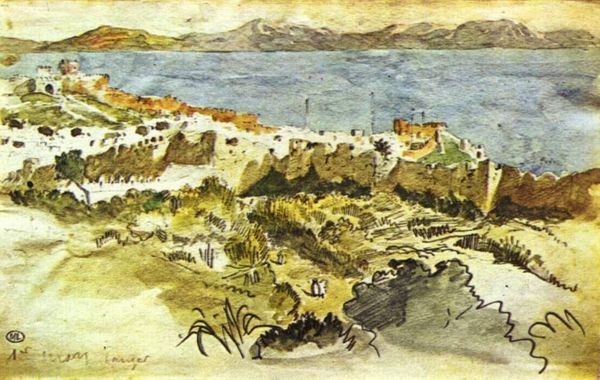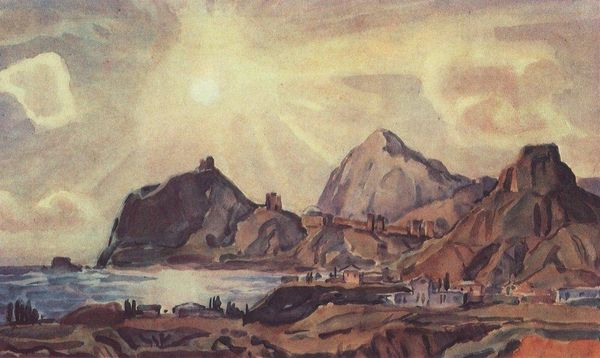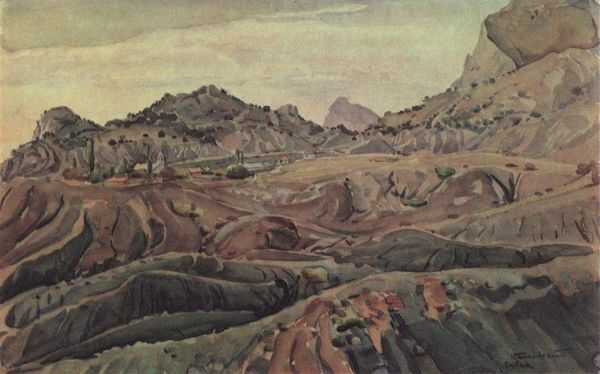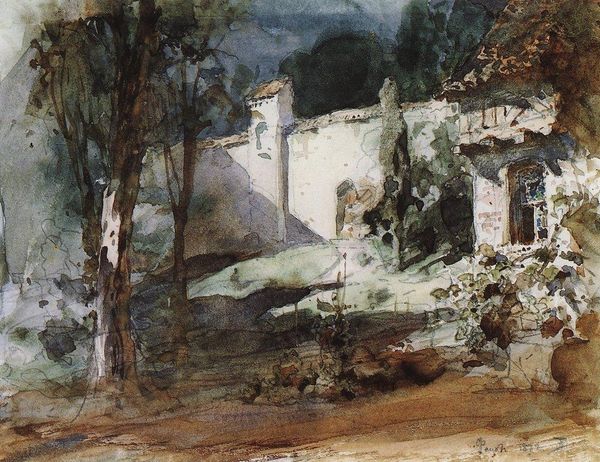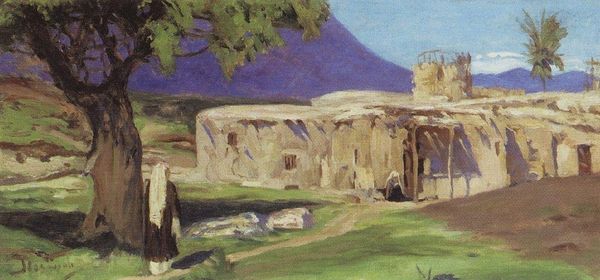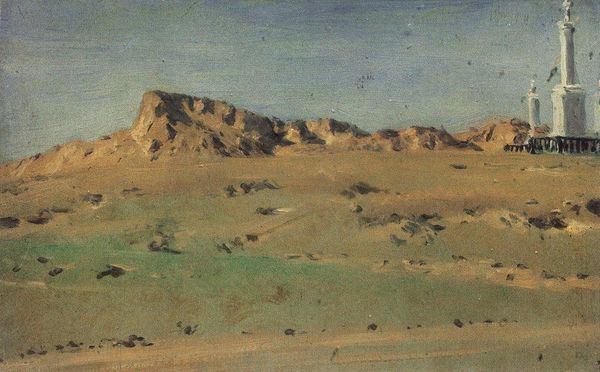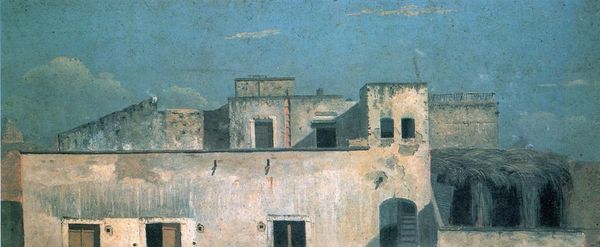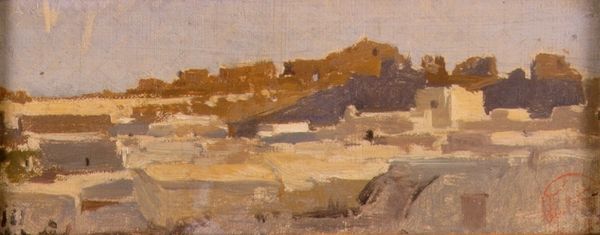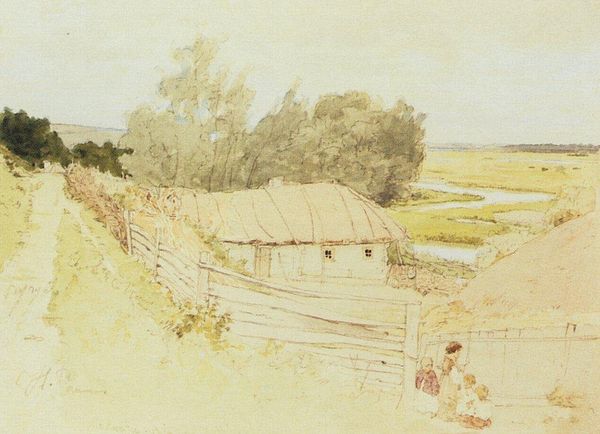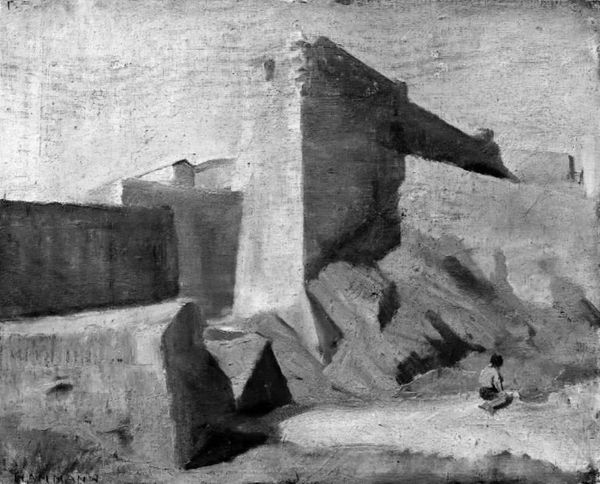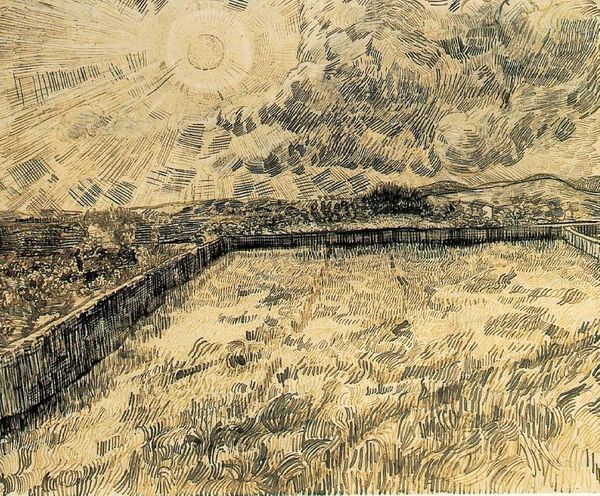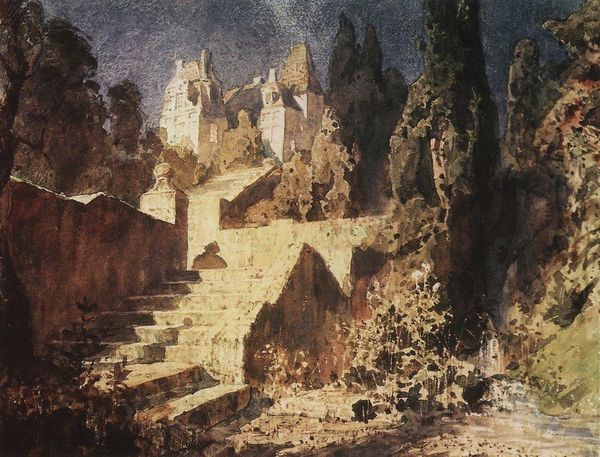
Copyright: Public domain
Konstantin Bogaevsky created this watercolor painting of the old bathhouses in Karasubazar. Bathhouses in Crimea, like those depicted here, were not just places for physical cleansing. They were social and cultural hubs, integral to community life, influenced by the region’s diverse history under the Ottoman Empire and Russian rule. Bogaevsky's choice to paint these decaying structures offers a commentary on the passage of time and the transformation of cultural landscapes. The town of Karasubazar, with its mix of Crimean Tatar and Russian influences, reflects the complex social fabric of the region during a period of significant political change, perhaps reflecting on the displacement and cultural shifts occurring as the old ways gave way to new social structures. To understand this work more fully, one might delve into the archives of Crimean history, studying the architectural styles of the period and reading accounts of daily life in Karasubazar. What we learn can reflect on the meaning of art as something that is contingent on social and institutional context.
Comments
No comments
Be the first to comment and join the conversation on the ultimate creative platform.
